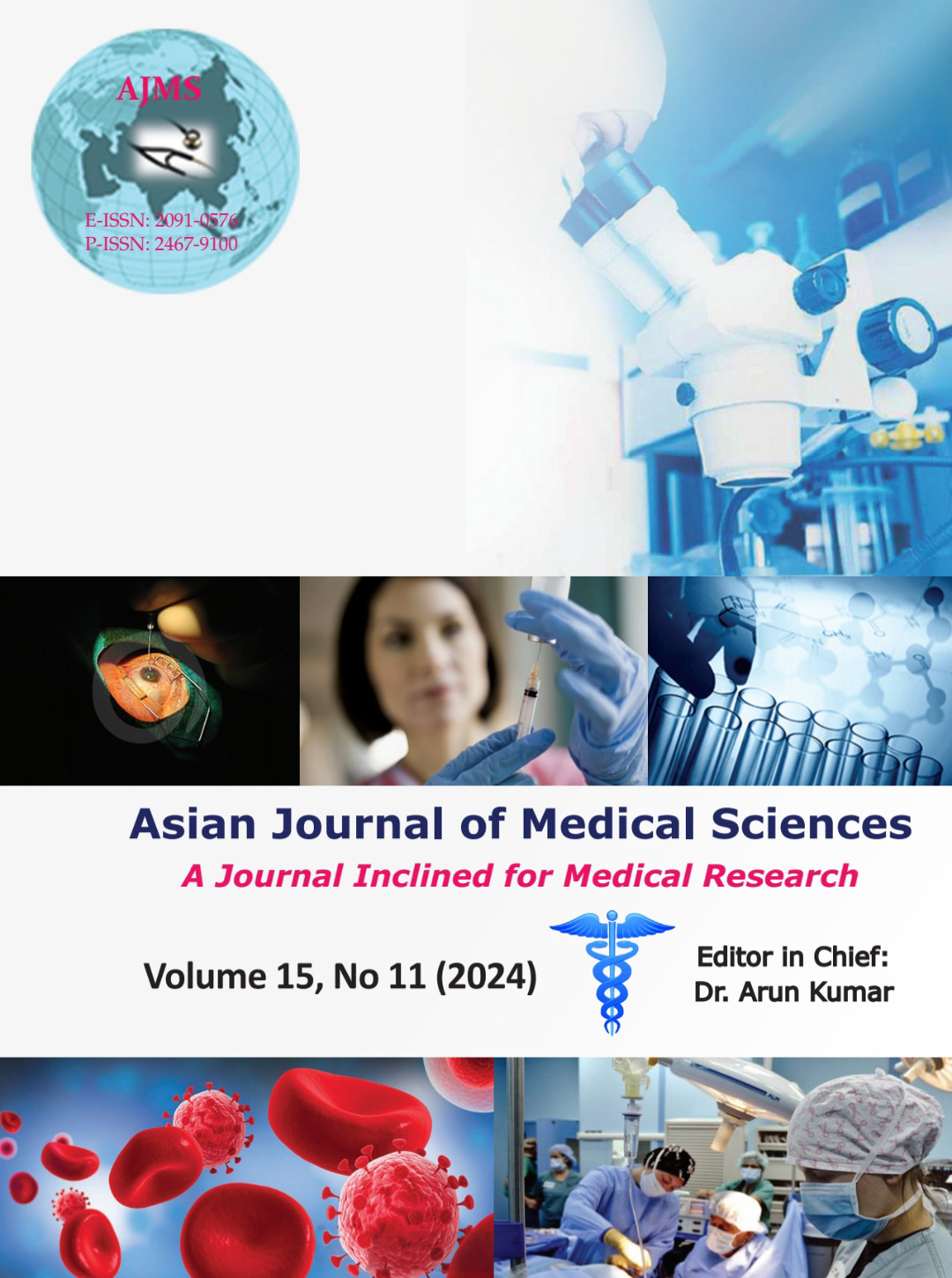Assessment of olfactory fossa depth using computed tomography imaging in a tertiary care setting
Keywords:
Functional endoscopic sinus surgery; Keros classification; Paranasal sinusAbstract
Background: Chronic sinonasal disorders are commonly treated surgically with endoscopic sinus surgery. Keros classifies the olfactory fossa (OF) into three groups according to the ethmoid roof level. The depth of the OF is determined by the size of the lateral lamella of the cribriform plate. Multidetector computed tomography is gold standard in evaluating the structure of the nasal cavity and paranasal sinuses (PNS).
Aims and Objectives: The aim of the study was to examine non-enhanced computed tomography (CT) scans of the paranasal sinus and analyze the depth of the OF to identify and categorize different Keros types and to evaluate anatomical variances to prevent major surgical complications.
Materials and Methods: IM was a prospective study and 160 patients were enrolled for the study. The study was undertaken in the Department of Radiodiagnosis at Sri Devaraj Urs Medical College in Tamaka, Kolar. Patient with chronic sinonasal disorders undergoing pre-operative non-enhanced CT PNS study was enrolled in the study. The depth of the OF was measured and categorized into three groups according to Keros classification.
Results: Out of 160 participants, 115 (71.8%) were male. The depth of the OF on the right (P=0.28) or left (P=0.66) did not differ significantly between genders. In men, the most prevalent (n=92, 57.5%) was Type-II Keros on the right, with 80 (50%) patients on the left. Type-1 Keros was more common in females on the right side (18 patients, 11.2%), whereas Type-II Keros was more common on the left side (20 patients, 12.5%). The proportion of different types of Keros differed significantly across genders (P<0.001).
Conclusion: This study reveals that Keros Type-II was the most prevalent among participants. Comprehensive insights into the anatomical variability of the olfactory region are pivotal for through pre-operative assessment of patients with nasal and PNS disorders in preventing significant surgical complications.
Downloads
Downloads
Published
How to Cite
Issue
Section
License
Copyright (c) 2024 Asian Journal of Medical Sciences

This work is licensed under a Creative Commons Attribution-NonCommercial 4.0 International License.
Authors who publish with this journal agree to the following terms:
- The journal holds copyright and publishes the work under a Creative Commons CC-BY-NC license that permits use, distribution and reprduction in any medium, provided the original work is properly cited and is not used for commercial purposes. The journal should be recognised as the original publisher of this work.
- Authors are able to enter into separate, additional contractual arrangements for the non-exclusive distribution of the journal's published version of the work (e.g., post it to an institutional repository or publish it in a book), with an acknowledgement of its initial publication in this journal.
- Authors are permitted and encouraged to post their work online (e.g., in institutional repositories or on their website) prior to and during the submission process, as it can lead to productive exchanges, as well as earlier and greater citation of published work (See The Effect of Open Access).




